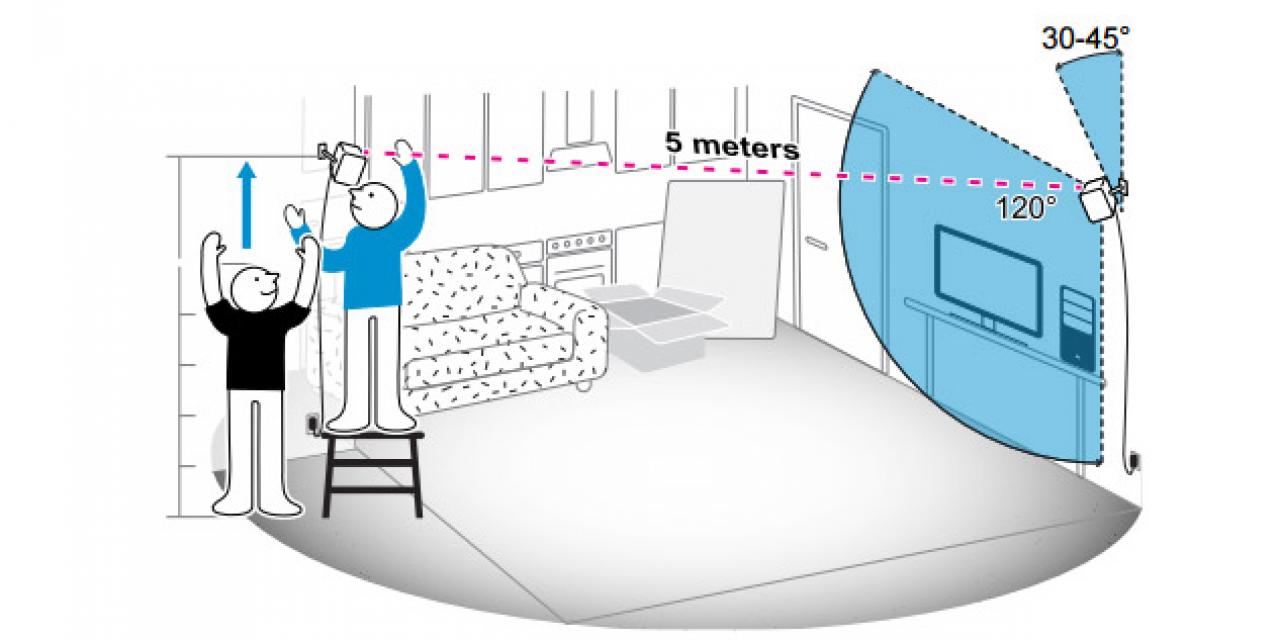
With consumer Virtual Reality just around the corner, people are weighing up whether they want to go with Oculus Rift, or HTC Vive hardware. Much has been said about both, with many fans of both declaring that the Vive may edge out Oculus because its supports room-scale VR out of the box.
However the new guidelines for how to set up lighthouse based virtual reality have now been released by HTC and they show that it can be quite a hectic set up if you want to get it working properly.
For starters, you need quite a lot of space. The base stations need to be set up a few metres apart for the best tracking, though at most five metres. They also need to be angled 30-45 degrees from the ceiling, offering a viewing angle of around 120 degrees vertically. You'll need wall sockets for both sensors too and nothing you can trip over while you move around.
That means keeping pets out of the way.
You also have to cover any reflective surfaces like mirrors or windows, and shut out any big lights that might interfere with the laser tracking system.
This is why Oculus is going down the camera tracking route with its hardware. It means hooking up USB connectors to the cameras, but it can handle the likes of mirrors, windows and a more complicated environment. Neither set up is perfect, but we may know more about which is preferable when the price for the Vive is revealed later this month.







